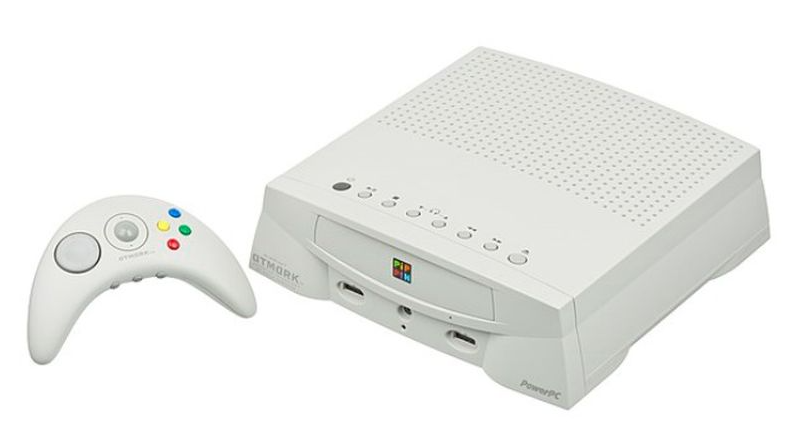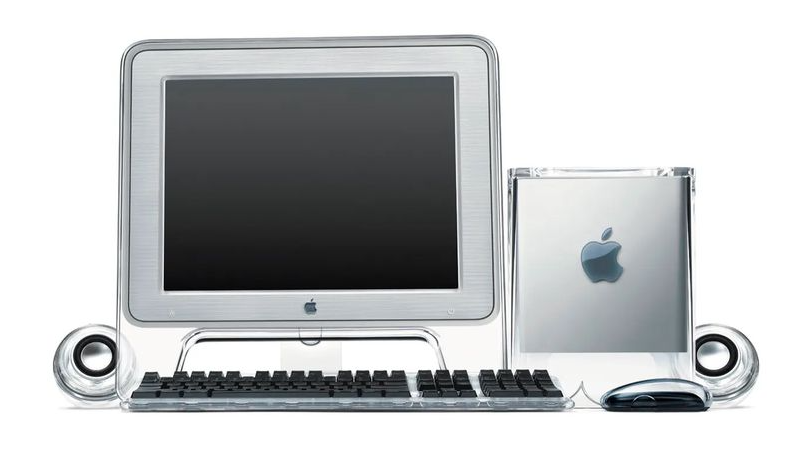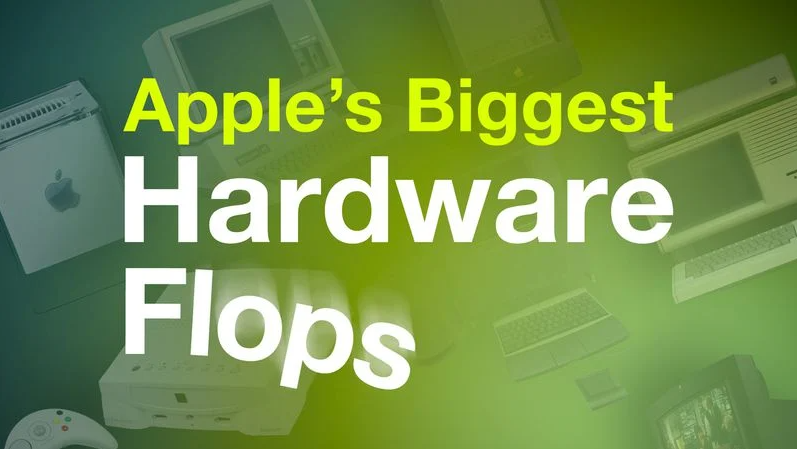Earning great success on many products, but Apple also has many hardware failures.
Today, Apple is associated with iPod, iPhone, iPad, MacBook – products that change the way people live and communicate. But even the most valuable company in the world makes marketing mistakes and hardware failures.
Illustrated photo.
Let's take a look at some of Apple's most notorious hardware failures, compiled from technology site MacRumors.
Apple III
The Apple III was the result of a project initiated in 1978 after Apple feared the popularity of the Apple II, released in 1977, would wane.
A panel of engineers worked on the Apple III project, making it the first Apple computer not designed by Steve Wozniak. The original project was to be completed in 10 months, but it took 2 years.
In November 1980, the Apple III finally came out, had an attractive price of $3,495 (equivalent to VND 81.95 million) and offered twice the performance of the Apple II and twice the memory (128KB RAM). ). It was Apple's first computer with a built-in floppy drive and ran a new operating system called Apple SOS, which featured an advanced memory management system and a hierarchical file system.

Apple III
Unfortunately, the Apple III had a faulty chassis design, and Apple was forced to recall the first 14,000 units produced due to severe overheating problems, partly because Steve Jobs did not agree to include a fan in the case. Apple even asks customers to raise the device a few inches above the desk. A modified version under the name Apple III Plus was released in 1983 to address common errors but still cause "Apple Defect" reputation damage.
The Apple III was discontinued in April 1984 while its successor was dropped from Apple's product line in September 1985. The company sold approximately 65,000–75,000 Apple III computers, bringing the total number of Apple III Plus units shipped to approximately 120,000. Jobs later admitted that the company lost "massive, immeasurable amounts of money" to the Apple III and that the product's weakness led thousands of American businesses to buy IBM PCs instead.
Apple Lisa
Sold in 1983, Lisa officially stands for "Local Integrated Software Architecture", which coincides with Steve Jobs' daughter, Lisa. Apple has positioned this as a business computer and as an alternative to the Apple II. Whereas previous computers relied on text-based interfaces and keyboard input, the Lisa was the first personal computer with a graphical user interface and a mouse.

Apple Lisa.
Even so, with a starting price of only about 10,000 USD (about 29,905 USD – 701 million VND at the moment), Lisa was too expensive, except for the wealthiest households, and this computer failed. By 1986, Apple had only sold about 100,000 units, and the entire Lisa platform was shut down. Apple was even forced to dispose of about 2,700 Lisas at a landfill in Utah. Less than 100 Lisa computers still exist today.
Jobs started the Lisa project in September 1980. Soon after, he joined the team that developed the first Macintosh.
Apple Newton
In May 1992, Apple CEO John Sculley unveiled the Newton MessagePad to a CES audience. He calls the sleek black handset, about the size of a VHS tape, the Personal Digital Assistant (PDA).
The product comes with a stylus and can be used to take notes, store contacts and manage calendars – standard functions of a modern smartphone but revolutionized in 1993. Users You can take this machine out, send a fax, and put it in your pocket, without going near the desktop.

Apple Newton.
However, this feature barely works. Apple shipped the first Newton MessagePad 14 months later for $900. At the time, other companies rushed to bring PDAs to market, and Newton still had major problems translating handwritten notes into text. After negative reviews, the product was widely mocked.
Apple released Newton OS 2.0 in March 1996, improving handwriting recognition. But this was too late.
When he returned to Apple in 1997, Jobs scrapped the product line.
Apple Newton has gone through 8 hardware versions, "Bad Apple" spent $ 100 million on product development but only about 200,000 units were sold. In return, the same idea behind the PDA brought the iPhone to the masses.
Macintosh TV
When it debuted in 1993, the idea of watching TV on a Mac was completely ahead of its time.
The black frame of the Macintosh TV is essentially an LC 520 paired with a 14-inch Sony Trinitron CRT. The product comes with a CD-ROM drive and remote control, allowing broadcasts to be displayed in 16-bit color. However, users must choose to watch TV or use a Mac.

Macintosh TV.
The Macintosh TV offers faster performance than the standalone LC 520 thanks to the Motorola 68030 32MHz processor. However, the 5MB RAM can only be upgraded to 8MB while the LC 520 can max out at 36MB.
Priced at $2,099 at launch, Apple's TV-Mac combo isn't cheap and hasn't been a hit. The product was discontinued in 1995, two years after 10,000 units were sold.
Pippin
Launched in 1996 with the help of Japanese game company Bandai, Pippin was Apple's foray into a CD-ROM-based game console. However, the product is poorly marketed, poorly supported, and overpriced.

Pippin.
Based on the early- to mid-'90s Macintosh architecture, Pippin runs a simplified version of Mac OS 7, faster than other consoles, equipped with a wide selection of ports, and supports modem and printer connections and provides users with the ability to connect external peripherals such as keyboards and mice.
At $650, Pippin is about $400 more expensive than top competitors like PlayStation and Nintendo 64. Plus, the product only supports 25 titles. game due to weakness of third party developers (Bandai).
Initially, Apple did not plan to release Pippin on its own, intending to make the platform an open standard by licensing the technology to third parties. However, when Steve Jobs returned to Apple in 1997, he stopped developing Pippin, causing Bandai to stop producing all Pippin models by mid-1997. The Cupertino-based company had hoped to ship half a million consoles each year but only sold about 42,000 units in total.
Macintosh 20th Anniversary Edition
Sold in March 1997 to mark the 20th year of Apple's business, the "20th Anniversary Macintosh" or TAM has a rather quirky design.
It contains a built-in 12.1-inch LCD flat panel display, vertically mounted CD and CD-ROM drives, and a built-in TV/FM tuner. TAM ran a modified version of Mac OS 7.6.1 to drive these features.

Macintosh 20th Anniversary Edition.
Inside, there's a 250MHz PowerPC 603e CPU and 64MB of RAM, and a custom Bose sound system with two included speakers and an integrated subwoofer.
TAM is marketed under the name of an operating machine, but its price is too high, at 7,500 USD (about 175 million VND) so sales are very poor. In the final weeks of being sold, "Apple House" reduced the price of TAM to $ 2,000 (about 46.9 million), angering those who had paid the previous price and forcing Apple to refund those who bought it. soon a new PowerBook.
Only 12,000 TAMs were produced, many not yet sold. The system lasted only 12 months in Apple's lineup and was discontinued a year later - in March 1998, shortly before the launch of the iMac G3, which offered similar specs but owned larger screen and costs only 1,299 USD (about 30.48 million VND).
Power Mac G4 Cube
Released on July 19, 2000, the Power Mac G4 Cube was announced as a technical marvel of Apple's industrial design. At less than a quarter of the size of most PCs available at the time, this fanless machine represented a whole new class of computers, featuring a powerful G4 PowerPC processor, Nvidia video card, and more. removable, AirPort card for Wi-Fi and DVD burner.
All housed in an 8-inch cube inside a transparent molded acrylic case. Steve Jobs called this product "the greatest computer ever".

PowerMac G4 Cube.
But the Cube has one major limitation – there's a handle on the bottom of the Cube that allows users to pull the internals out of the box, providing access to three RAM slots and space to insert an AirPort card, no features a proprietary PCI slot and video card that has been shrunk down to fit in tight spaces. The device is also too expensive, starting at $1,799, $200 more than the more upgradeable Power Mac G4.
Apple sold less than 150,000 units in 349 days, and on July 3, 2001, the company officially announced that it would cease production of the Cube indefinitely. Apple CEO Tim Cook later described the G4 Cube as "a huge failure".

